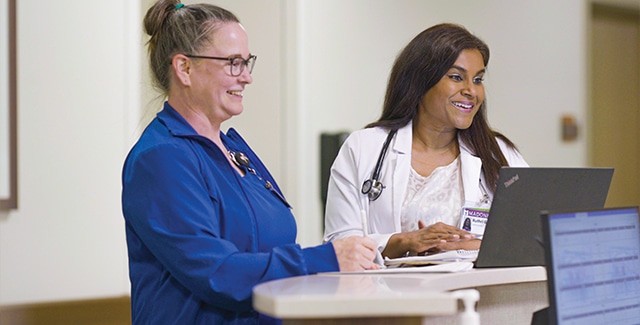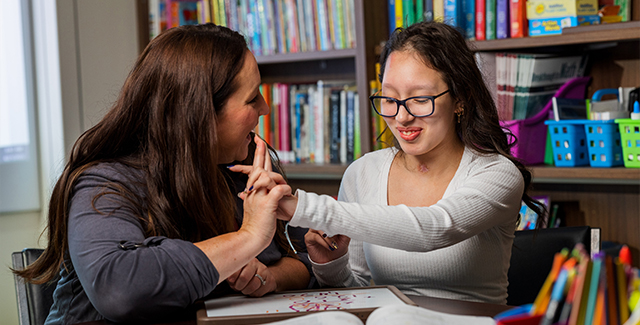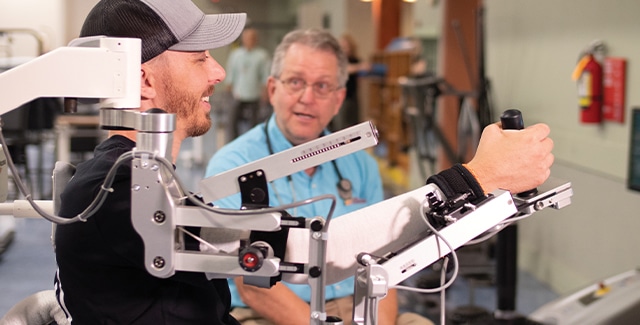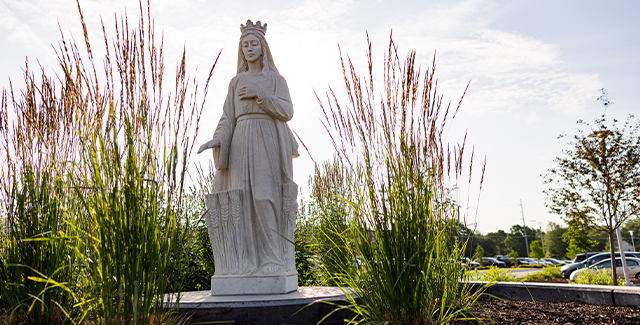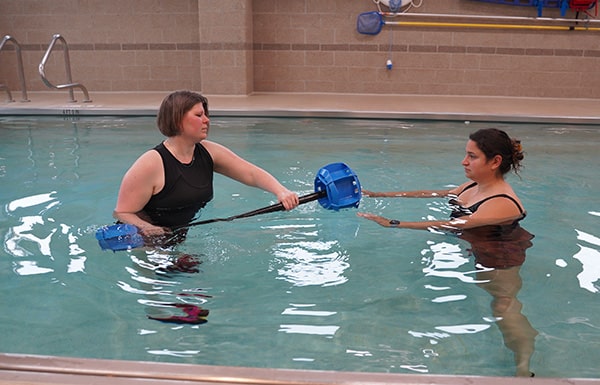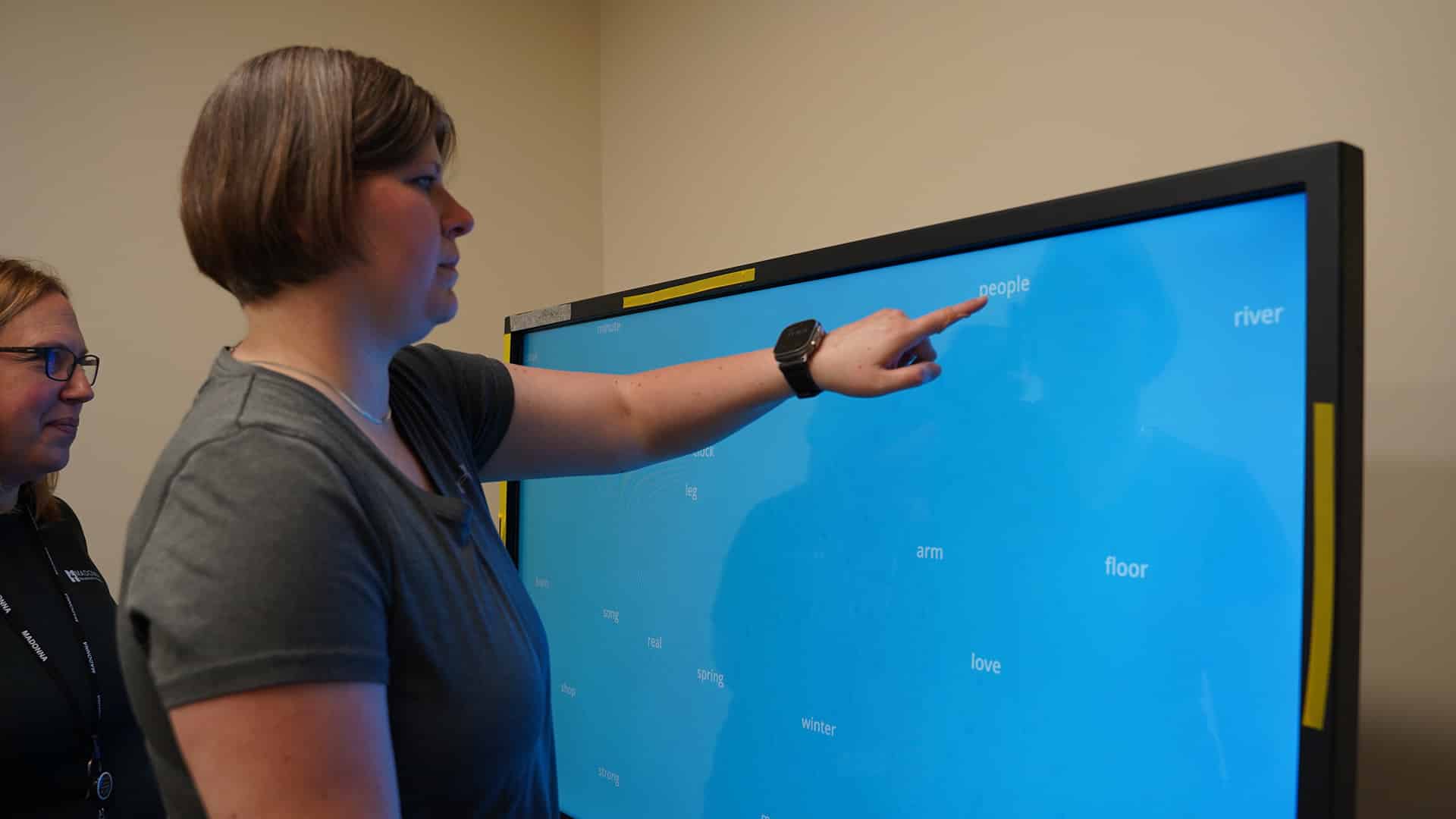Michelle McKibbon says she remembers trying to get ready for work on August 16, 2024, when her leg suddenly gave out. She stood back up and continued getting dressed, until she started seeing spots and went to lay down. She fell again. She yelled to her husband for help, who quickly recognized the signs of a stroke. Michelle’s face was drooping, her speech was slurred, and she couldn’t lift her arms.
“Apparently, what I had was two transient ischemic attacks, or mini strokes” Michelle said. “Once I got to the hospital, I had a full-blown stroke.”
Michelle woke up in a hospital bed at CHI Health Bergan Mercy, unable to move the left side of her body or see clearly.
“I was just in shock,” she remembers. “It’s not really something I had on my radar. I always thought stroke is something that can happen to you later in life, so it completely caught me off guard. I didn’t think I’d be facing it in my 40s for sure.”
Michelle says the diagnosis was really hard to accept. One day, she was an active and independent 45-year-old working full-time as an accountant, and the next day, she says she needed help with “pretty much everything.”
Michelle is not alone. According to the National Institutes of Health (NIH), approximately 10-15% of all strokes occur in adults aged 18-50, and that number has increased over the last ten years.
She came to Madonna Rehabilitation Hospitals’ specialized stroke program, determined to regain her independence and return to both work and driving. She relearned how to walk and mastered adapted ways to navigate her activities of daily living. After nearly a month of intense daily physical and occupational therapies, Michelle progressed to Madonna’s Rehabilitation Day program. There, she honed in on her left arm’s mobility and coordination and her visual deficits.
To start, Michelle used Madonna’s specialized equipment like the functional electrical stimulation (FES) bike to awaken her muscles and the ArmeoSpring to improve her range of motion.
“As she has progressed throughout her care, we’ve been able to stop using some equipment and start trying new things that she wouldn’t have been able to do before,” Nicole Slusher, OTR/L, Madonna’s outpatient occupational therapy clinical supervisor, said. “We’ve used the Xcite and the Saebo Rejoyce (for her left sided deficits), Dynavision and BITS (for visual scanning and processing). Because she has made so much progress, we’ve kind of been able to use everything with her along the spectrum of care.”
Michelle’s favorite piece of equipment is Madonna’s driving simulator, allowing her to safely practice her divided attention and reaction time in preparation for a return to the road. She participated in Madonna’s driver re-training program, and passed the course with flying colors.
While she continued to see ongoing improvements on land, constant pain greatly limited some of Michelle’s progress. Aquatic therapy in Madonna’s warm water therapy pool gave her the extra support she needed to succeed.
“Pain kind of tipped her into the pool because they just couldn’t quite address it in the way that they wanted to on land,” Becca Saef, OTR/L, Michelle’s aquatic therapist. “I think having the input from the water and removing gravity and changing the way that she was used to moving allowed her to kind of rebuild pathways without having as much pain.”
Michelle calls her weekly aquatic therapy sessions game changers in her recovery. The pool allows her to practice symmetrical movements with walking while having bodyweight support from the water.
“I’ve been able to overcome that pain and it just helps a lot,” Michelle said. “We do a lot with reaching and coordination too, and it helps with strengthening my arm as well, so I just really love it.”
On her last day of outpatient therapy, Michelle celebrated all her progress with both inpatient and outpatient therapists who helped her along the way. She can now walk independently, and has been cleared to return to full-time work and driving.
“Her first day in outpatient therapy was the first day she had any movement in her left wrist,” Slusher remembers. “Now, she’s working and driving. Those are huge milestones that when we talk about young strokes, are very important to them, so she accomplished both of those. It’s been really fun to be along on that journey and be a cheerleader for her.”
Michelle’s care team credits her commitment to the recovery process for her huge gains.
“She understands how important buying into what she’s doing is and kind of naturally seems to understand why we’re doing what we’re doing,” Saef says. “She’ll tell you if something is hard and why it’s hard so you can modify it so that it’s really helpful for her.”
Reflecting on what she’s learned throughout her rehabilitation journey, Michelle says she’s going to make some changes in the future.
“I’ve learned to actually put my health first,” she said. “I wasn’t really doing that. I really put my work as a priority in my life and I wasn’t really paying attention to what my body was telling me. I would work through my lunches and work through breaks and not get up and move around. I just look at it like, don’t worry about the work. It’ll be there tomorrow, but your health is more important than anything else.”
In sharing her story, Michelle hopes to provide support and inspiration to the next young stroke survivor who, like her, may feel lost and overwhelmed by their diagnosis.
“Stroke recovery is definitely an ongoing process and there’s no timeline on it,” Michelle said. “I would just tell people, don’t give up and never lose hope because things do get better and you will see progress. It just takes a lot of time and a lot of patience and a lot of hard work.”
For more information on Madonna’s CARF-accredited stroke rehabilitation program, click here.

